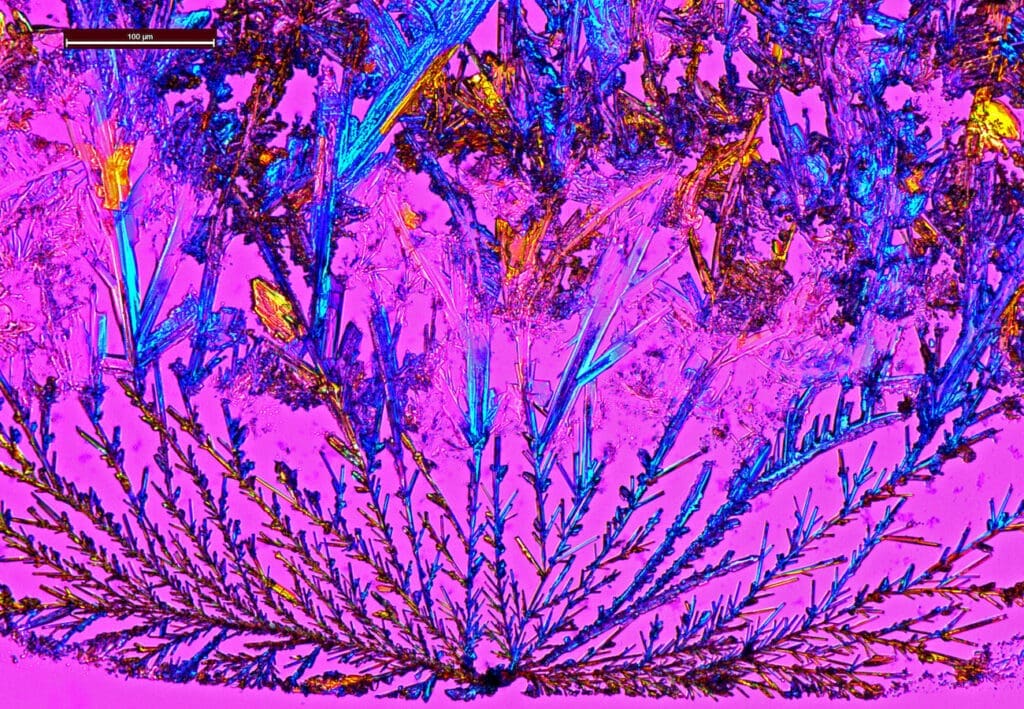
Baryta muriatica
Latin name: Baryta muriatica
Short name: Bar-m
Common name: Barium Chloride | Chloride of Barium | Barium Muriate
Primary miasm: Syphilitic Secondary miasm(s): Sycotic
Kingdom: Minerals
Family: Inorganic Salt (Baryta + Chlorine)
- Symptomatology
- Remedy Information
- Differentiation & Application
Prepared from the pure chemical Barium chloride (BaCl₂·2H₂O), a crystalline, highly soluble salt formed by combining barium carbonate or barium sulphide with hydrochloric acid. In its crude form, it is toxic, particularly affecting the heart, muscles, and gastrointestinal tract. In homeopathy, it is triturated to potency, retaining its affinity for vascular degeneration, muscular weakness, and profound glandular involvement. It occupies a unique place between Baryta carbonica and Baryta iodata, being less prominently scrofulous but deeply destructive in vascular and cardiac pathology [Clarke].
Historically used in chemical analysis, particularly to precipitate sulphates, and in industrial applications such as heat treatment processes.
First employed clinically by Hahnemann’s contemporaries for aneurysms and vascular degeneration, with proving details extrapolated from its parent salt Baryta carbonica and from toxicological records [Hering, Allen].
- Arteries: Marked affinity for sclerotic degeneration, aneurysm formation, and vascular rigidity [Hering].
- Heart: Cardiac hypertrophy, degeneration, and weakness, especially in elderly [Clarke].
- Cerebrovascular System: Weak, sluggish cerebral circulation; arteriosclerotic dementia.
- Glands: Chronic induration of tonsils and cervical glands, though less markedly scrofulous than Bar-c.
- Nervous System: Paralytic weakness, especially post-apoplexy [Boericke].
- Muscles: Atrophy and loss of contractile power in aged or post-stroke cases.
- Warmth and gentle covering.
- Slow, deliberate movement in open air.
- Steady routine without emotional shocks.
- Cold, damp weather [Hering].
- Sudden exertion, especially climbing stairs.
- Suppressed perspiration.
- Mental strain in elderly.
- Baryta carbonica – More developmental retardation, glandular focus, less on vascular sclerosis.
- Baryta iodata – More glandular induration and scrofulous tendencies; Bar-m. more purely vascular/cardiac.
- Plumbum metallicum – Paralysis with more muscle wasting and drawing pains; Bar-m. paralysis from vascular origin.
- Secale cornutum – Vascular degeneration with more coldness, gangrene; Bar-m. less violent, slower.
- Complementary: Digitalis, Adonis vernalis in cardiac weakness.
- Antidotes: Dulcamara (cold damp).
- Follows well: After acute stroke, follows Arnica or Opium.
Baryta muriatica is the archetypal remedy for the hardening and narrowing of life’s channels — the arteries, the mental faculties, and the muscular powers. It is for those in whom circulation is slow, responses sluggish, and degeneration has set in, especially in the elderly. It helps bridge recovery after vascular events, easing the burden on the heart and supporting the vessels.
- Useful in post-stroke paralysis with arteriosclerosis.
- Cardiac hypertrophy from sustained high blood pressure.
- Aneurysms of large vessels with rigidity.
- Chronic tonsillitis in debilitated elderly.
Mind:
- Senility, vascular origin
- Memory loss, recent events
- Childishness in old age
Head:
- Vertigo, arteriosclerotic
- Head heaviness, worse exertion
Throat:
- Tonsils, chronic enlargement in elderly
Chest:
- Heart, hypertrophy, arteriosclerotic
- Palpitations on exertion
Extremities:
- Paralysis after stroke
- Cold extremities from poor circulation
Generalities:
- Arteriosclerosis
- Degeneration of heart muscle
Clarke J.H. – Dictionary of Practical Materia Medica: Notes on vascular degeneration, heart, and paralysis.
Hering C. – Guiding Symptoms: Detailed cardiac and cerebral symptoms.
Allen T.F. – Encyclopedia of Pure Materia Medica: Toxicological and clinical reports.
Boericke W. – Pocket Manual: Concise cardiac and vascular indications.
Hughes R. – Cyclopaedia: Pharmacological profile of barium salts.
Farrington E.A. – Clinical Materia Medica: Vascular degeneration in elderly.
Nash E.B. – Leaders: Cardiac weakness and arteriosclerosis.
Boger C.M. – Synoptic Key: Keynotes for elderly vascular patients.
Burnett J.C. – Tumours of the Breast and their Cure: Mentions vascular sclerosis cases.
Hale E.M. – New Remedies: Clinical observations on post-stroke cases.
